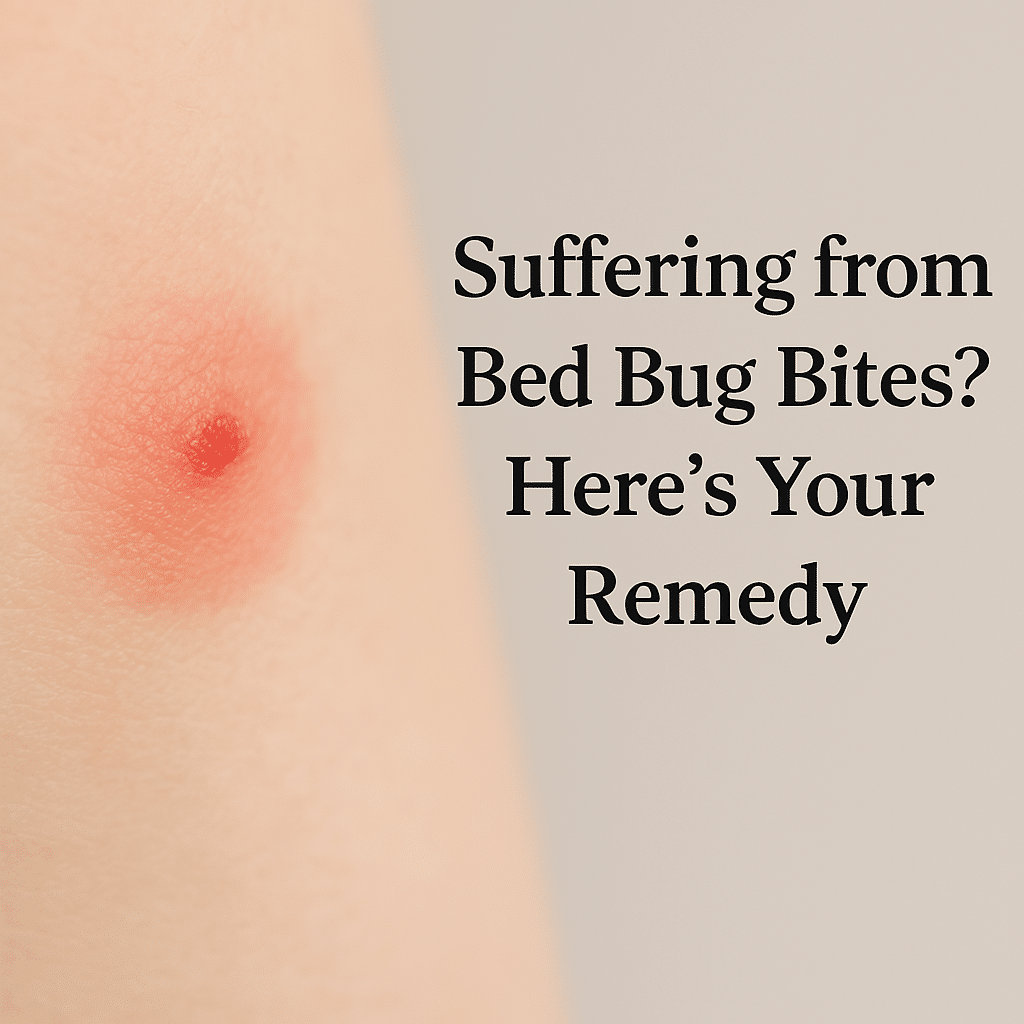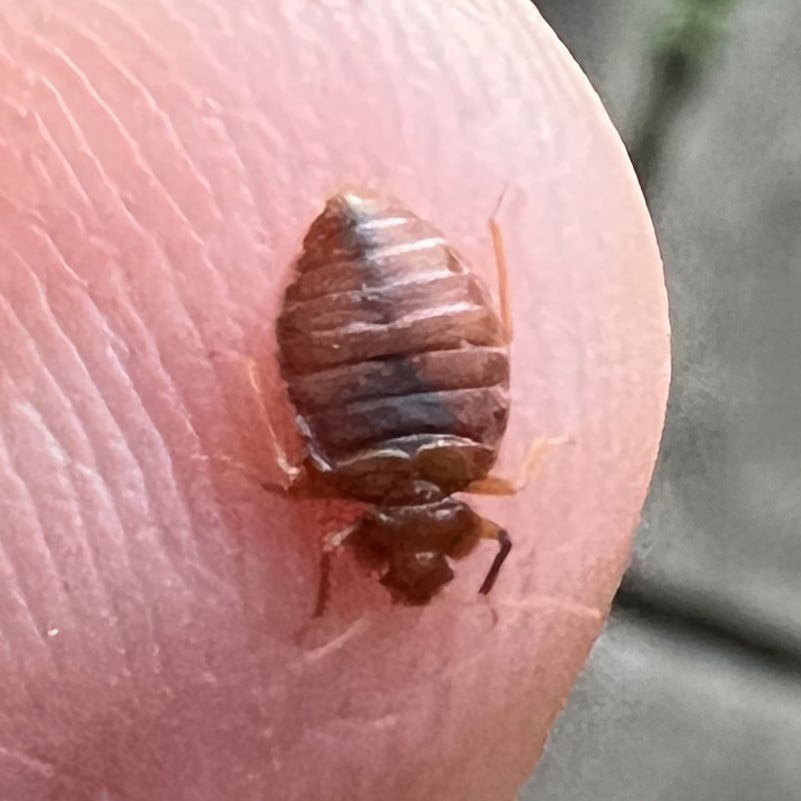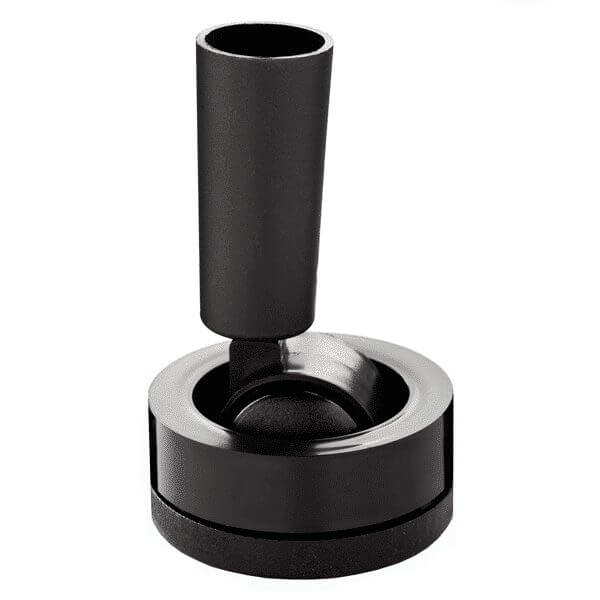
In the article
Last Updated on 24/04/2025 by Tony Abrahams
Bed bugs are not only irritating but also bring harmful effects to the body. If you find yourself losing sleep because of too much itching, your bedroom could be infested with bed bugs.
It is, therefore, important to identify the signs of a bed bug infestation early so you can take prompt actions and eventually, prevent it from coming back. In this article, we will discuss everything you need to know about finding bed bug remedy solutions, including immediate relief and long-term preventive measures.
Recognising a Bed Bug Infestation: Early Signs and Symptoms
The first step to getting rid of bed bugs is to identify whether or not your home is indeed infested with these annoying creatures.
With their thin and flattened bodies, bed bugs can easily hide in narrow cracks and crevices. They are often found on mattresses, couches, bed frames, bedside furniture, picture frames, wooden floorboards, carpet edges, and behind wallpapers and skirting boards. Bed bugs particularly like to hide in folds or stitches which can conveniently conceal them.
Because bed bugs are often unnoticeable, you should be able to actively recognise bed bug signs and symptoms —much more so if there is an infestation in your home. Below are the common signs of infestation that will require serious attention and effective bed bug remedy.
- Presence of small, flat, reddish-brown bugs in and around your bed
- Presence of translucent eggshells and bed bug skins around your bed
- Bites on your skin that may appear as red, itchy welts
- Difficulty sleeping or waking up in the middle of the night because of itchy skin from bed bug bites
- Small and dark blood stains on your sheets and pillowcases
- Dark or rusty stains on your mattresses from bed bug fecal matter
- A distinct musty odour in areas infested with bed bugs
- Distinct bite marks that may cause your skin to react, including redness, itch, swelling, and wheals measuring 2 cm in size
The moment you notice some or all of the signs of a bed bug infestation above, it’s crucial to take action right away. Continue to read below for tips and techniques on how to get rid of the infestation and what bed bug remedy solutions to follow.

Taking Immediate Actions: Natural and Home Remedies for Bed Bug Bites
Despite having an infestation in your home, the good news is there are a lot of ways you can do to relieve bed bug bites. In fact, there are natural bed bug remedy solutions you can find inside your kitchen that you can use to alleviate the itch, swelling, and redness from bed bug bites.
Here are some natural home remedies to soothe bed bug bites:
🛌 Natural Remedies for Bed Bug Bites
| Remedy | How It Helps | How to Use |
|---|---|---|
| Cold Compress | Reduces swelling and numbs the itchy sensation. | Apply an ice pack or cold cloth to the affected area for 10–15 minutes. |
| Aloe Vera | Soothes irritated skin and speeds up healing. | Use fresh aloe vera gel and apply directly to the bites. |
| Oatmeal | Relieves itching and calms inflamed skin. | Add colloidal oatmeal to a warm bath and soak for 15–20 minutes. |
| Lemon Juice | Natural astringent that reduces itching and swelling. | Dab lemon juice on a cotton ball and apply gently to the bites. |
| Baking Soda | Neutralises pH levels and reduces inflammation. | Mix with water to form a paste, apply to bites, let sit for 10 minutes. |
| Coconut Oil | Moisturises and helps relieve itching thanks to its anti-inflammatory properties. | Apply a thin layer directly to the affected area. |
| Cucumber Slices | Provides a cooling effect and reduces puffiness and irritation. | Place fresh slices over the bites for 10–15 minutes. |
Professional vs. DIY Bed Bug Remedy Options: Pros and Cons
Once you’ve recognised and confirmed that there is indeed an infestation in your home, the next thing you need to do is to take action and decide which bed bug remedy solution would you go for—professional or DIY bed bug treatment.
Professional Bed Bug Treatment
A professional bedbug treatment service involves hiring a licensed and experienced pest control team that specialises in bedbug eradication. Below are the advantages and disadvantages of choosing a professional route.
Pros:
- Professional exterminators are knowledgeable and experienced in treating bed bug infestations effectively.
- They can create and provide customised treatment plans that are tailored to customers’ unique infestation conditions and concerns.
- They utilise effective tools, methods, and strategies to ensure the comprehensive and efficient elimination of bed bugs. These include heat treatments, pesticides, and steam cleaning among others.
Cons:
- Professional bed bug treatment services can be costly, especially for severe infestations.
- Many professionals use pesticides, toxic products, and chemical treatments that expose home owners to harmful chemicals.
- Not all professional pest control companies are equal. This means that the effectiveness of their procedures can vary. It is, therefore, important to choose a reputable and experienced pest control provider.
DIY Bed Bug Remedy
A do-it-yourself (DIY) bedbug remedy involves using home bed bug products, solutions, and methods to address an infestation without getting professional help. Below are the advantages and disadvantages of deciding to take the DIY route.
Pros:
- DIY bed bug treatment methods are generally cheaper than hiring professional pest control services.
- Homeowners can take immediate action without waiting for a scheduled appointment with a professional exterminator.
- With DIY, you can choose the type of treatment you would use. Many DIYers choose natural or less-toxic substances to reduce the risks of chemical exposure.
Cons:
- Homeowners may lack access to professional-grade products and equipment that are often more effective in eliminating them.
- Without professional help, there is a possibility that you may misidentify the real problem or overlook hidden bed bug hiding spots, resulting in incomplete or improper treatment.

Bed Bug Remedy
Bed Bug Bites in Australia: How to Find, Treat and Prevent Bed Bugs Fast
Eco-Friendly Bed Bug Treatments: Safe for You and the Environment
When it comes to bed bug remedies, finding an eco-friendly solution is essential if you care about the safety of your family, home, and the environment. Many treatments are made with strong chemicals that are not only potentially toxic to humans and pets but are also harmful to the environment.
An eco-friendly treatment is key to the safe eradication of annoying bed bugs in your home. This includes using natural products that are made or formulated with organic ingredients, using herbal pest repellants such as essential oils, performing chemical-free heat treatment, regularly doing steam cleaning, and vacuuming your mattresses, carpets, and other common bed bug hiding spots.
Remember, you don’t have to use strong chemicals and pesticides to get rid of them. As long as you have the right tools and materials, an eco-friendly beg bug remedy is just as effective in eradicating them in your home.
Innovative Bed Bug Barriers: Long-Term Prevention Techniques
Eliminating bed bugs in your bedroom and other parts of the house is one thing. Preventing them from re-infestation is another story. If you wish to keep your home free from this nasty and annoying little creature, here are the long-term prevention techniques you need to keep in mind.
🧼 Bed Bug Prevention Tips
| Tip | Why It Matters | Action Steps |
|---|---|---|
| Clean, declutter, and repair your room regularly | Clutter and damage create perfect hiding spots for bed bugs. | Keep the room tidy, repair cracks in wood or floors, use mattress encasements, and wash bedding often. |
| Wash and heat-dry bedsheets, blankets, and pillowcases | Bed bugs and their eggs can survive on fabrics—even if they look clean. | Wash all bed linens every other week and heat dry them to kill bugs and eggs. |
| Inspect second-hand furniture before bringing it home | Used furniture could be carrying hidden bed bug infestations. | Check thoroughly for early signs of bed bugs and consider treating or avoiding second-hand pieces. |
| Avoid using shared laundry machines | Bed bugs can transfer through shared washers and dryers. | Use sealed plastic bags for transport. Keep clean and dirty clothes separate. |

Floor Barrier
The Future of Control: Trends and Developments
The evolving landscape of bed bug control and management tells us that there are new and developing trends, tools, and methods that we can use to eradicate these little creatures. We are likely to witness a shift towards more sustainable and integrated approaches, with a focus on minimising environmental impact and improving overall efficacy.
Natural and eco-friendly remedies are gaining popularity because people are becoming more conscious of the harmful effects of chemical products on the environment. With this, consumers are increasingly seeking alternatives that are both effective against them and gentle on the environment. As the demand for sustainable products and solutions increases, researchers and manufacturers are likely to invest more in the development of eco-friendly control methods, contributing to a shift in the pest control industry towards practices that prioritise both efficacy and environmental responsibility.
For safe, effective, and reliable organic DIY products and solutions, you can trust Bed Bug Barrier. Our commitment to providing eco-friendly solutions ensures that you can deal with bedbug infestations without compromising your health, your home, and the environment. Explore our range of natural remedies and treatment services designed to eliminate bed bugs while promoting a sustainable and chemical-free approach.
Say goodbye to bed bugs with confidence and conscience! Contact us today to get started.
Fequently Asked Questions: Bed Bug Remedy
Q1: What’s the fastest way to get rid of bed bugs without calling pest control?
A: The fastest DIY remedy is combining high-temperature steam to instantly kill bed bugs on contact, followed by applying Diatomaceous Earth (DE) for long-term protection. Steam knocks them dead immediately, while DE creates an invisible trap that kills any survivors for weeks or even years. Add mattress covers and bed leg traps, and you’ve just created an anti-bed bug fortress—no chemicals, no reapplications, and no pest control bill.
Q2: Do natural remedies like essential oils really work against bed bugs?
A: Short answer? Not really. Essential oils like tea tree, lavender, and peppermint might repel bed bugs for a few minutes, but they won’t kill them or stop an infestation. Bed bugs are survivors—they hide deep in cracks, come out at night, and are relentless. You need a method that kills them, not just sends them running to the next room. That’s why physical methods like steam and DE powder work best.
Q3: Why do bed bugs keep coming back even after I treat them?
A: Chances are, you’re only treating what you can see. Bed bugs love hiding in places you’d never expect—inside power points, bed frames, carpet edges, even behind skirting boards. Most supermarket sprays only work if they directly hit the bug, and the eggs usually survive. That’s why the best remedy includes a one-time setup that offers ongoing protection. If bed bugs can’t get to you without crossing a lethal barrier (like Diatomaceous Earth), they die trying—and they don’t come back.
Are You Looking for an Organic DIY Treatment?
Watch Our DIY Video For An Ensemble Bed
Watch Our DIY Treatment Video For A Bed with Slats
If you have enjoyed our blog, Bed Bug Remedy, then you might like to read about our DIY Bed Bug Instructions.



Leave a Reply